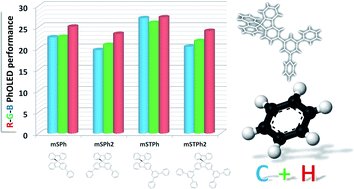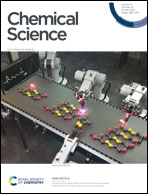Evolution of pure hydrocarbon hosts: simpler structure, higher performance and universal application in RGB phosphorescent organic light-emitting diodes†
Abstract
In the field of phosphorescent organic light-emitting diodes (PhOLEDs), designing high-efficiency universal host materials for red, green and blue (RGB) phosphors has been quite a challenge. To date, most of the high-efficiency universal hosts reported incorporate heteroatoms, which have a crucial role in the device performance. However, the introduction of different kinds of heterocycles increases the design complexity and cost of the target material and also creates potential instability in the device performance. In this work, we show that pure aromatic hydrocarbon hosts designed with the 9,9′-spirobifluorene scaffold are high-efficiency and versatile hosts for PhOLEDs. With external quantum efficiencies of 27.3%, 26.0% and 27.1% for RGB PhOLEDs respectively, this work not only reports the first examples of high-efficiency pure hydrocarbon materials used as hosts in RGB PhOLEDs but also the highest performance reported to date for a universal host (including heteroatom-based hosts). This work shows that the PHC design strategy is promising for the future development of the OLED industry as a high-performance and low-cost option.



 Please wait while we load your content...
Please wait while we load your content...